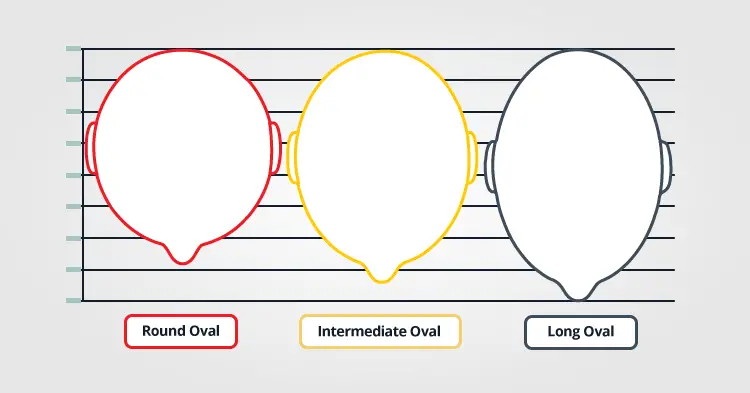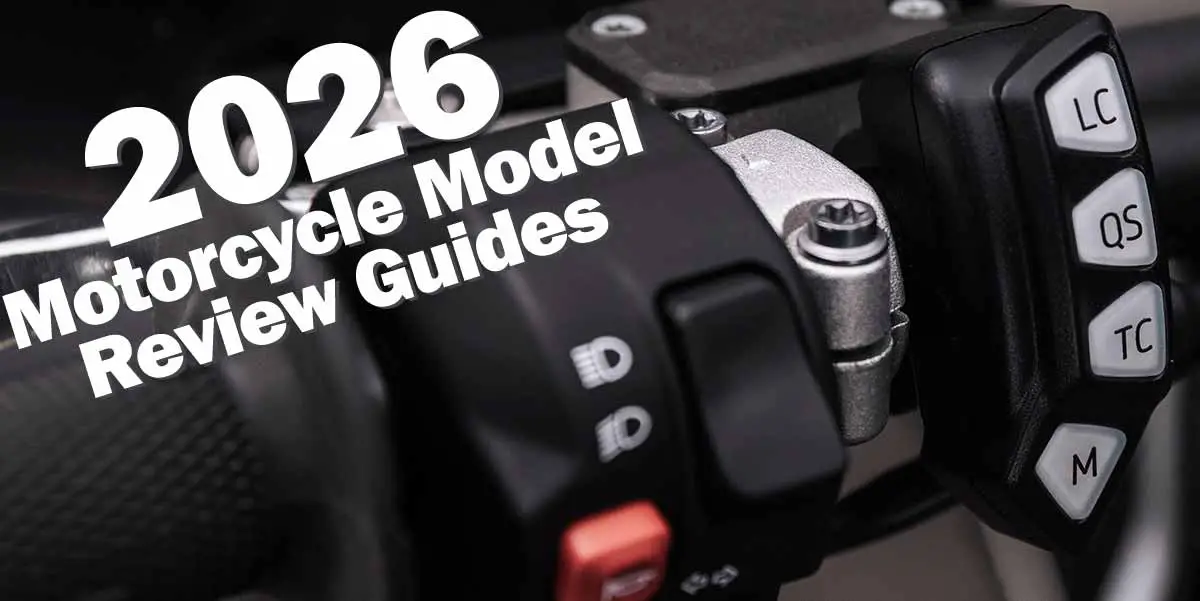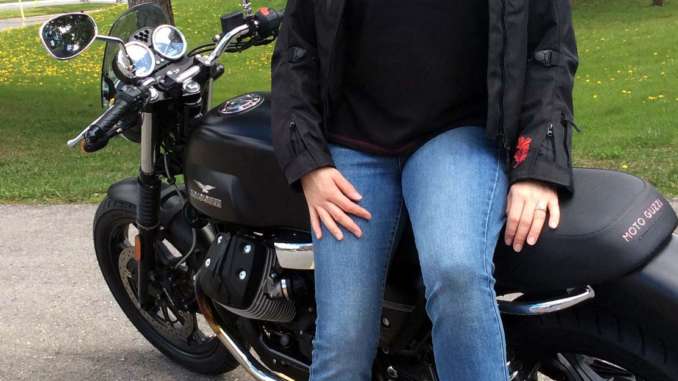
Riding gear isn’t just about looking the part, it’s about confidence, comfort, and survival. Every piece of gear has a story: from early leather jackets worn by WWII pilots, to modern CE-rated armor tested in labs. Gear has evolved alongside motorcycles themselves, shaped by culture, crashes, and innovation. In our Beginner Training Guide, we talked about how skills save lives. Gear is the other half of that equation. Training helps you avoid accidents; gear helps you survive the ones you can’t avoid.🏍️ Why Gear Matters
📜 A Brief History of Riding Gear
This page is designed as a quick reference, something you can screenshot, print, or keep on your phone. Each section covers one essential piece of beginner gear, with a mix of history, safety standards, and myth-busting. By the end, you’ll know not just what to buy, but why it matters. We’ll also connect back to other Total Motorcycle Beginner Guides, so you can see how gear fits into the bigger picture of training, riding culture, and confidence-building. Think of this as your gear foundation, the base layer of safety and comfort that makes every ride better. Modern gear isn’t just designed, it’s tested. Helmets, jackets, gloves, boots, and pants are certified under international standards. Here are the most common ones you’ll see: Don’t worry if those codes look like alphabet soup, we’ll break them down in each section. The key takeaway is this: look for certified gear. It’s your guarantee that the equipment has been tested to save your skin (literally). 🏍️ With the foundation set, let’s start at the top, the helmet.🚫 Myth‑Busters
✅ Reality: Most crashes happen under 50 km/h. Even a parking-lot fall can shred jeans or break bones without protection.
✅ Reality: Entry-level CE-rated gear is affordable. A $150 jacket with armor is far cheaper than hospital bills.
✅ Reality: You can’t control other drivers, road debris, or sudden weather. Gear is your insurance against the unpredictable.🧩 How This Checklist Helps
📊 Safety Standards at a Glance
Gear Common Standards What It Means Helmet DOT (USA), ECE 22.06 (Europe), Snell Impact-tested, penetration resistance, retention strength Jacket/Pants CE EN17092 (A, AA, AAA) Abrasion resistance, seam strength, armor impact absorption Gloves CE EN13594 Knuckle impact, abrasion, tear resistance Boots CE EN13634 Ankle protection, sole rigidity, crush resistance Eye Protection ANSI Z87.1, ECE visor standards Shatter resistance, optical clarity, UV protection
The crown jewel of motorcycle safety, literally. Helmets have saved more lives than any other piece of gear, and their evolution tells a fascinating story.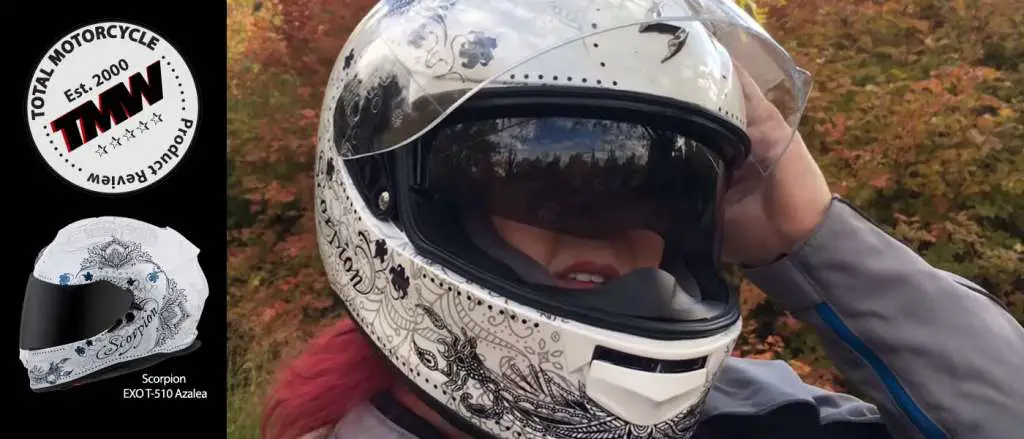
Helmets
Early riders in the 1900s wore little more than cloth or leather caps. These offered zero impact protection but kept bugs and dust out of the hair. By the 1930s, British neurosurgeon Dr. Hugh Cairns began advocating for protective helmets after treating numerous motorcycle head injuries during WWII. His research directly influenced the adoption of helmets in both military and civilian riding. The first real protective helmets were made of cork and canvas, later evolving into fiberglass shells in the 1950s. By the 1970s, the full-face helmet emerged, offering chin and jaw protection, a game-changer, since studies showed that over 30% of impacts occur in the chin area.📜 A Brief History of Helmets
Today’s helmets are rigorously tested under international standards. Here are the most common certifications you’ll see: For beginners, the key is simple: always buy a certified helmet. DOT is the legal minimum in the USA, ECE is widely respected worldwide, and Snell is a bonus for track riders. Avoid novelty helmets, they may look cool, but they’re useless in a crash.📊 Modern Helmet Standards
Standard Region What It Tests DOT USA Impact absorption, penetration, strap strength ECE 22.06 Europe (global adoption growing) Multi‑impact zones, rotational forces, visor safety Snell USA (independent) High‑energy impacts, stricter than DOT SHARP UK Star rating system based on real‑world crash data
🚫 Helmet Myth‑Busters
✅ Reality: Over 30% of impacts occur on the chin. Only a full‑face or modular helmet protects that area.
✅ Reality: Certified helmets meet strict peripheral vision standards. They also reduce wind noise, making it easier to hear important sounds.
✅ Reality: Helmets degrade over time. Replace every 5 years, or immediately after a crash or drop.
Helmet Types
Not all helmets are created equal. Each type balances protection, comfort, and style differently. Here’s how they stack up for beginners:
| Type | Coverage | Pros | Cons |
|---|---|---|---|
| Full-Face | Entire head + chin | Maximum protection, quiet, weatherproof | Can feel warm in summer |
| Modular (Flip-Up) | Full-face with flip-up chin bar | Convenient for glasses, talking, fueling | Slightly heavier, hinge is a weak point |
| Open-Face (¾) | Head, no chin | Great airflow, retro style | No chin protection, noisy |
| Half Helmet | Top of head only | Lightweight, cruiser aesthetic | Minimal protection, often fails safety tests |
Safety Test Insights
Independent testing (like the UK’s SHARP program) shows that full-face helmets consistently outperform other types in impact protection.
Modular helmets perform well when locked, but less so when worn open. Open-face and half helmets provide significantly less protection, especially in chin and jaw impacts.
For beginners, the recommendation is clear: start with a full-face or modular helmet. They offer the best balance of safety, comfort, and versatility.
✅ Beginner Helmet Checklist
- Certified (DOT, ECE, or Snell)
- Full-face or modular design
- Snug but comfortable fit, no pressure points
- Clear visor with anti-fog and UV protection
- Replace every 5 years or after impact
🏍️ With your head protected, let’s move down to the next layer, the jacket.
From Marlon Brando’s leather rebellion to today’s CE‑rated textile armor, the motorcycle jacket is both cultural icon and lifesaver.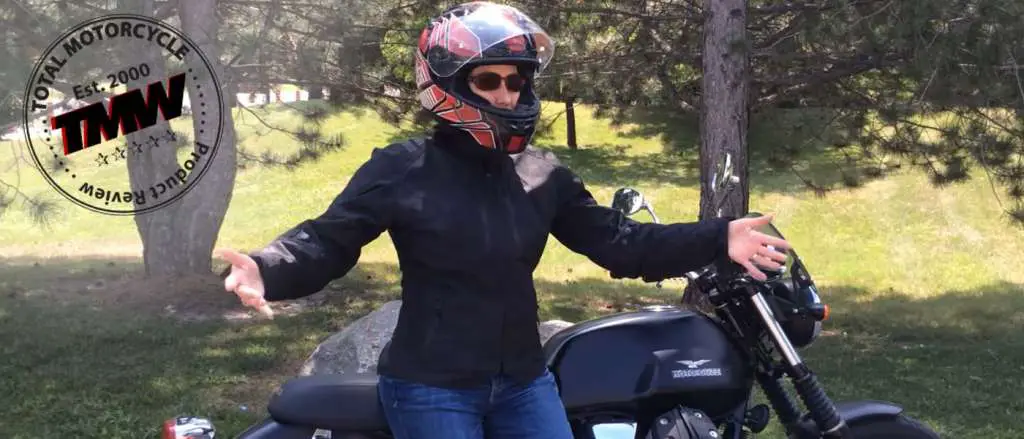
Jackets
The motorcycle jacket is one of the most recognizable symbols of riding culture. In the 1940s and 50s, returning WWII pilots and soldiers adapted their leather flight jackets for riding. By the time Marlon Brando wore a Schott Perfecto in The Wild One (1953), the black leather jacket had become a symbol of rebellion and freedom. Through the 1960s–70s, leather jackets were the default, thick cowhide offered abrasion resistance, and the style screamed “biker.” But leather had limits: heavy, hot in summer, and not waterproof. By the 1980s, textile technology (Cordura, Kevlar blends) began to change the game, offering lighter, weather‑resistant options. In Europe (and increasingly worldwide), jackets are tested under EN17092. You’ll see ratings like A, AA, or AAA: Most beginners will be well‑served by an AA‑rated textile or leather jacket with CE Level 2 armor in shoulders and elbows. Back protectors are often optional, but highly recommended. A good jacket isn’t just protection, it’s confidence. When you know your upper body is covered, you ride more relaxed, more focused, and more in control. That’s why jackets are one of the best investments a beginner can make. 🏍️ With your torso protected, let’s move on to the next contact point, your hands.A Brief History of Motorcycle Jackets
🧪 Modern Materials
📊 CE Safety Ratings
Rating Use Case Protection Level A Urban commuting Basic abrasion + impact protection AA Touring, mixed riding Higher abrasion resistance, stronger seams AAA Track, high‑speed Maximum abrasion + impact protection 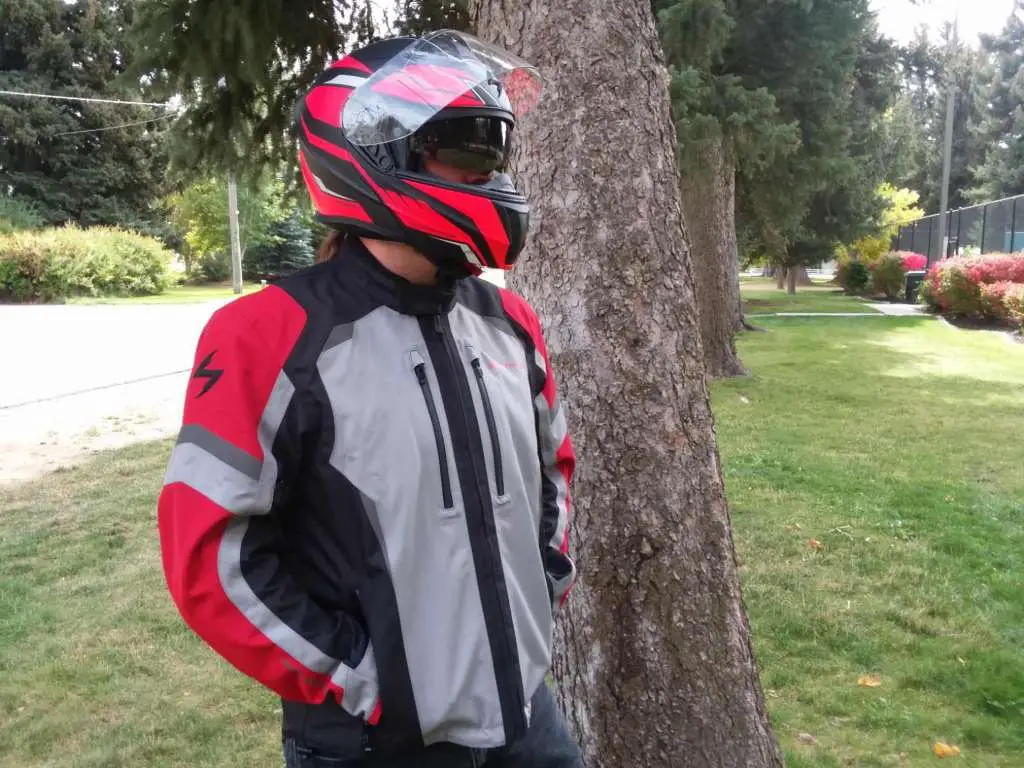
🚫 Jacket Myth‑Busters
✅ Reality: Modern CE‑rated textiles can outperform cheap leather in abrasion and weather resistance. Quality matters more than material alone.
✅ Reality: Mesh jackets with armor provide airflow and protection. Bare skin at 40 km/h on asphalt is like a belt sander, not worth the risk.
✅ Reality: Many jackets ship with foam pads that do little. Upgrading to a CE Level 2 back protector dramatically improves spinal protection.✅ Beginner Jacket Checklist
They may look small, but gloves are one of the most important pieces of gear. They protect your hands, your primary connection to the bike.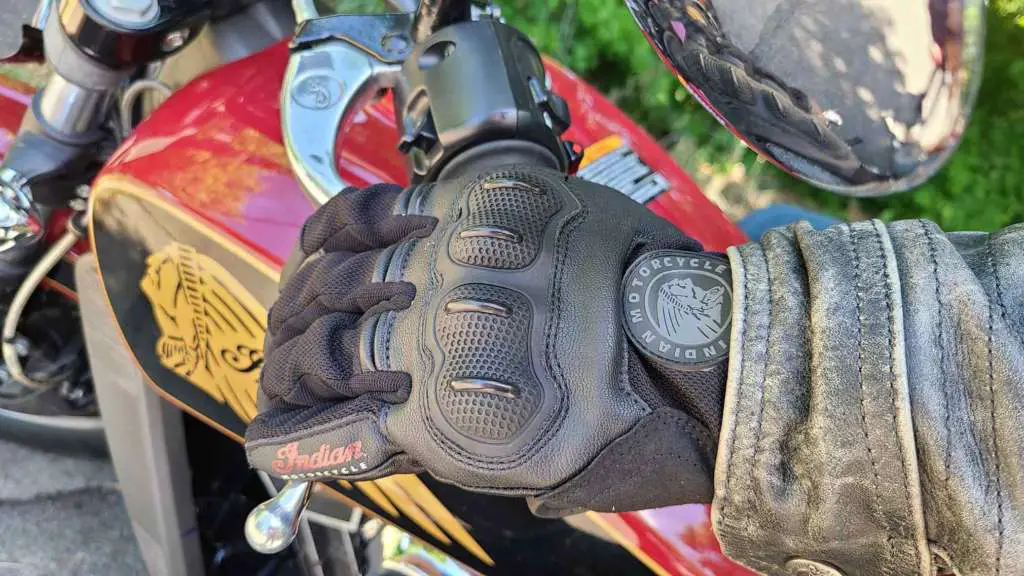
Gloves
In the early days of motorcycling, riders wore whatever gloves they had, often leather work gloves or military surplus. These provided basic abrasion resistance but little else. By the 1960s, racing culture began influencing glove design, adding reinforced palms and knuckle protection. In the 1980s–90s, as sportbikes grew in popularity, gloves evolved into high‑tech equipment with carbon fiber, Kevlar stitching, and impact armor. Today, gloves are purpose‑built: short‑cuff for commuting, gauntlet for touring and racing, and ADV gloves for mixed terrain. Each style balances dexterity, comfort, and protection. Gloves are tested under EN13594, which measures abrasion resistance, seam strength, and knuckle impact absorption. Ratings are typically Level 1 (basic) or Level 2 (higher protection). For beginners, Level 1 gloves are a good start, but if budget allows, Level 2 offers peace of mind and durability.A Brief History of Motorcycle Gloves
🧪 Modern Materials
📊 CE Safety Standards
Rating Features Best For Level 1 Basic abrasion + knuckle protection Urban commuting, short rides Level 2 Higher abrasion, stronger seams, advanced armor Touring, sport riding, track use
Gloves are often overlooked, but they’re your first line of defense in a fall, instinctively, we put our hands out. Protecting them means protecting your ability to ride tomorrow. 🏍️ With your hands covered, let’s step down to the next critical contact point, your boots.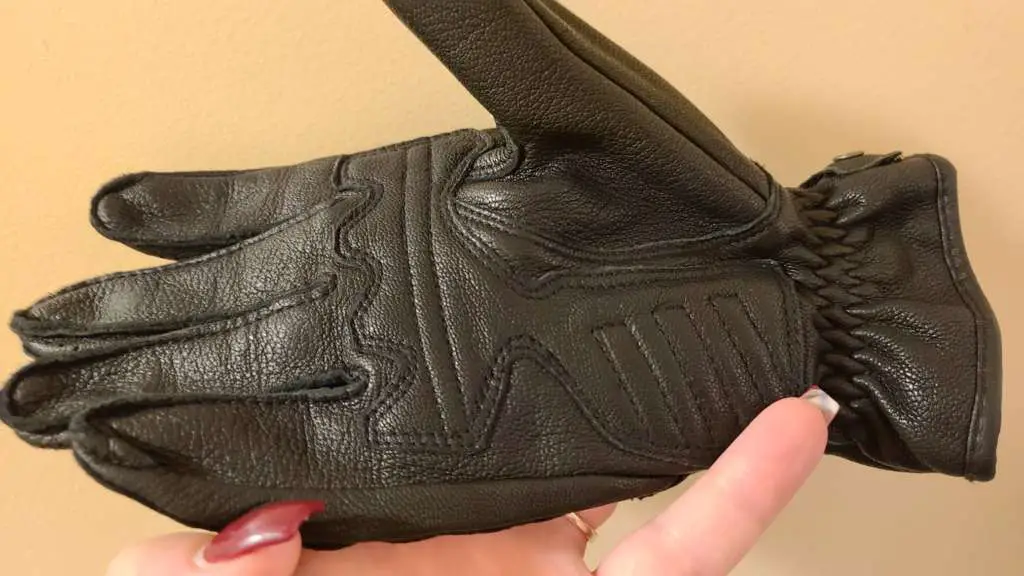
🚫 Glove Myth‑Busters
✅ Reality: Work gloves or fashion leather lack reinforced seams, armor, and abrasion testing. Motorcycle gloves are purpose‑built for crashes.
✅ Reality: Modern gloves are designed for dexterity. Thin palms with reinforced sliders give both feel and protection.
✅ Reality: Short‑cuffs are fine for commuting, but gauntlet gloves protect wrists and prevent sleeves from riding up in a slide.✅ Beginner Glove Checklist
From military surplus to CE‑rated armor, motorcycle boots have evolved into one of the most overlooked but critical pieces of gear.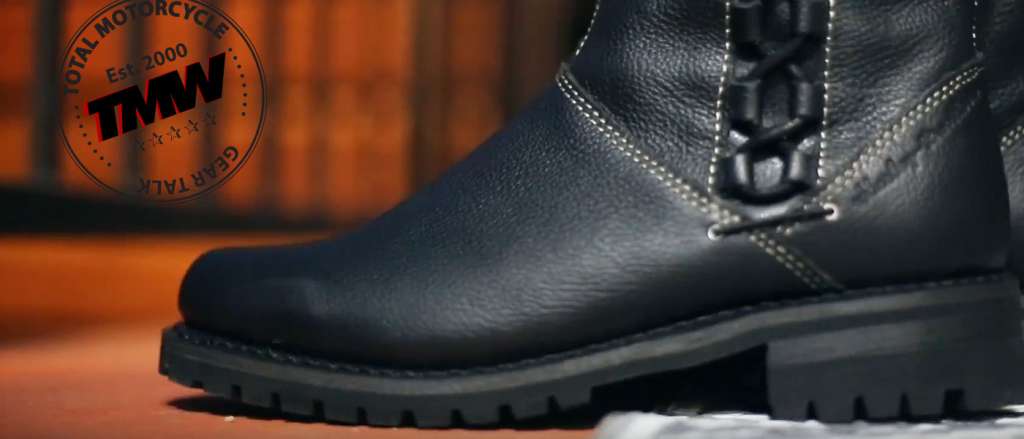
Boots
In the early 20th century, riders wore whatever sturdy footwear they had, often work boots or military surplus. These offered some abrasion resistance but little ankle protection. By the 1950s, leather engineer boots became popular among cruiser riders, thanks to their rugged look and tall shafts. Racing culture in the 1970s pushed boot design further, adding reinforced soles and shin guards. Today, motorcycle boots are purpose‑built: touring boots for long‑distance comfort, sport boots for track protection, ADV boots for mixed terrain, and casual riding shoes for urban commuting. Each style balances protection, flexibility, and style. Boots are tested under EN13634, which measures abrasion resistance, impact protection, and sole rigidity. Ratings include: For beginners, Level 1 boots are a good entry point, but Level 2 boots provide the best long‑term protection and comfort.A Brief History of Motorcycle Boots
🧪 Modern Materials & Features
📊 CE Safety Standards
Rating Features Best For Level 1 Basic abrasion + crush resistance Urban commuting, casual riding Level 2 Higher abrasion, ankle + shin armor, stronger soles Touring, ADV, sport riding
Boots may not be glamorous, but they’re lifesavers. Ankles are fragile, and recovery from a foot injury can take months. A good pair of boots means you can walk away from a crash, literally. 🏍️ With your feet protected, let’s move up to the next layer, your pants.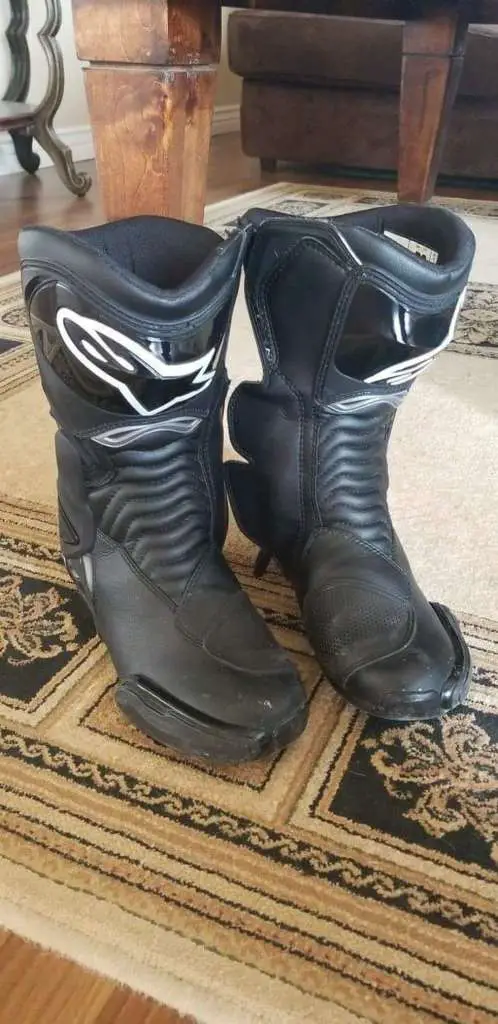
🚫 Boot Myth‑Busters
✅ Reality: Work boots lack ankle bracing, crush‑resistant soles, and armor. In a crash, they can twist or split, leaving ankles exposed.
✅ Reality: Touring and ADV boots are designed for all‑day comfort. Modern designs use breathable liners and flexible panels.
✅ Reality: Riding shoes protect better than sneakers, but they don’t match the ankle and shin protection of full boots. They’re a compromise, not a replacement.✅ Beginner Boot Checklist
From blue jeans to Kevlar‑reinforced armor, riding pants have evolved from casual wear to life‑saving equipment.
Pants
In the early decades of motorcycling, riders wore everyday trousers, often denim or wool. Jeans became the unofficial uniform of motorcyclists in the 1950s, thanks to Hollywood icons like James Dean. While stylish, denim offered almost no abrasion resistance. Studies show that standard jeans can shred through in less than one second of sliding on asphalt. By the 1990s, manufacturers began reinforcing jeans with Kevlar panels and adding removable armor. This gave riders the casual look they wanted with the protection they needed. Today, armored jeans, textile touring pants, and leather racing suits all serve different riding styles. Pants are tested under EN17092, the same as jackets. Ratings include A, AA, and AAA: For beginners, AA‑rated reinforced jeans or textile pants with CE Level 2 knee armor are the sweet spot, protective, comfortable, and versatile.A Brief History of Riding Pants
🧪 Modern Materials
📊 CE Safety Standards
Rating Features Best For A Basic abrasion + impact protection Urban commuting, casual rides AA Higher abrasion resistance, stronger seams Touring, mixed riding AAA Maximum abrasion + impact protection Track, aggressive sport riding
Pants are often the last piece beginners buy, but they shouldn’t be. Your legs are large impact zones in most crashes, and protecting them means fewer injuries and faster recovery. Plus, modern armored jeans look casual enough to wear off the bike. 🏍️ With your legs protected, let’s finish the checklist with the final piece, eye protection.🚫 Pants Myth‑Busters
✅ Reality: Standard denim lasts less than one second in a slide. Reinforced jeans or textile pants can withstand 4–7 seconds, giving you time to stop sliding.
✅ Reality: Leather offers unmatched abrasion resistance. Touring and cruiser riders also benefit from leather pants, especially on highways.
✅ Reality: Modern CE armor is slim, flexible, and often removable. It’s barely noticeable when riding, but critical in a crash.✅ Beginner Pants Checklist
See and be seen, eye protection is more than comfort, it’s survival. From dusty goggles to anti‑fog visors, this gear keeps your vision clear and your ride safe.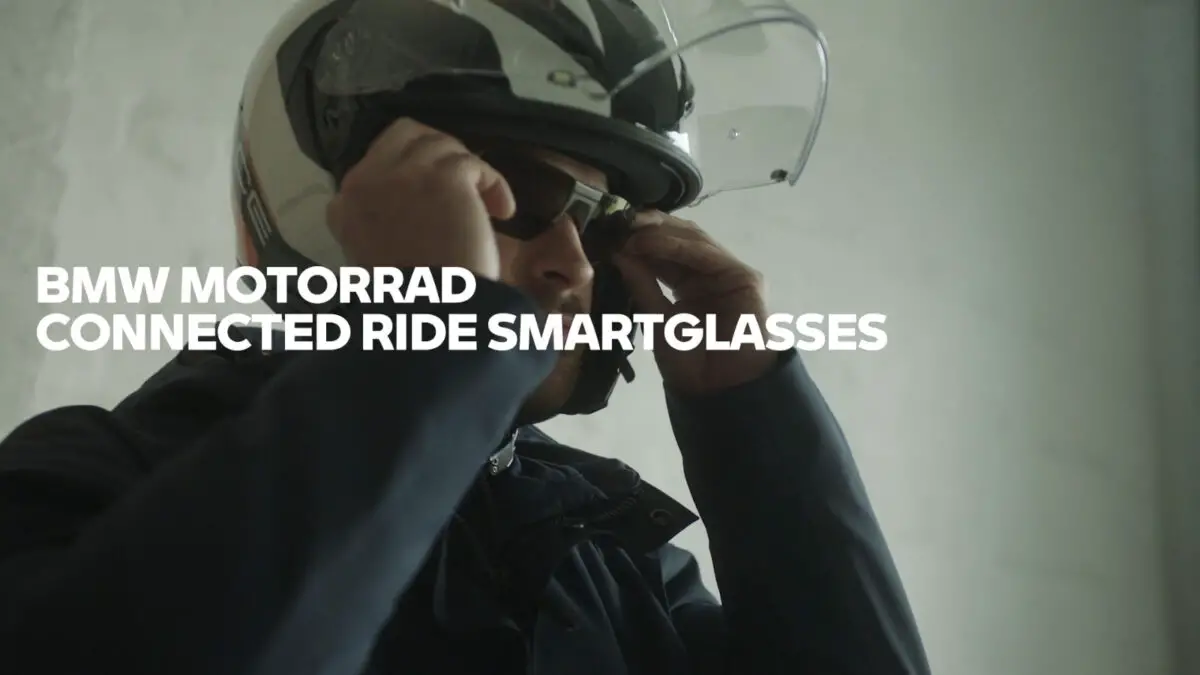
Eye Protection
In the early 1900s, riders wore aviation‑style goggles to keep dust, bugs, and wind out of their eyes. These were often leather‑framed with glass lenses, effective, but fragile. By the 1960s, as full‑face helmets became popular, integrated visors replaced standalone goggles for most street riders. Off‑road and motocross riders, however, still rely on goggles today for maximum airflow and dust protection. Eye protection is tested for shatter resistance, optical clarity, and UV filtering. Common standards include: For beginners, a clear visor with anti‑fog coating is the safest choice. Tinted or mirrored visors are great for daytime, but always carry a clear option for night riding.📜 A Brief History of Eye Protection
🧪 Modern Options
📊 Safety Standards
Standard Region What It Tests ANSI Z87.1 USA Impact resistance, shatterproof lenses ECE Visor Standards Europe Optical clarity, UV protection, scratch resistance DOT Helmet Visor USA Basic impact and clarity requirements
Eye protection is often underestimated, but vision is everything on a motorcycle. Clear, fog‑free sightlines mean faster reactions and safer rides. Protect your eyes, and you protect your ride. 🏍️ With every piece of gear covered, let’s pull it all together in one quick‑reference checklist you can screenshot or print.🚫 Eye Protection Myth‑Busters
✅ Reality: Regular sunglasses shatter on impact and can fly off at speed. Only shatter‑resistant, certified visors or goggles are safe for riding.
✅ Reality: Tinted or mirrored visors reduce visibility at night. Always carry a clear visor or goggles for low‑light conditions.
✅ Reality: Anti‑fog coatings, pinlock inserts, and proper ventilation prevent fogging. Clear vision is non‑negotiable.✅ Beginner Eye Protection Checklist
Screenshots, printouts, or taped to the garage wall, here’s your one‑page gear foundation.
Quick Reference Beginner’s Gear Checklist
Gear Certification Beginner Recommendation Key Notes Helmet DOT / ECE 22.06 / Snell Full‑face or modular Replace every 5 years or after impact Jacket CE EN17092 (AA) Textile or leather with CE2 armor Upgrade back protector if foam only Gloves CE EN13594 Level 1 minimum, Level 2 preferred Reinforced palms, knuckle armor Boots CE EN13634 Level 1 minimum, Level 2 preferred Ankle cups, crush‑resistant sole Pants CE EN17092 (AA) Reinforced denim or textile CE2 knee armor, hip armor recommended Eye Protection ANSI Z87.1 / ECE visor Clear visor + tinted/photochromic option Anti‑fog, UV protection, shatterproof
🏁 Outro: Gear as Confidence, Not Just Protection
Gear isn’t just about surviving a crash, it’s about riding with confidence. When you know your head, hands, feet, and body are protected, you ride more relaxed, more focused, and more in control. That confidence makes you a better rider, not just a safer one.
In our Beginner Training Guide, we showed how skills save lives. In our Motorcycle Market Timing Guide, we showed how smart choices save money. Here, in the Beginner’s Gear Checklist, we’ve shown how the right equipment saves skin, bones, and peace of mind.
Remember: gear has a history, a culture, and a purpose. From leather jackets that symbolized rebellion, to CE‑rated armor that represents progress, every piece tells a story. By wearing it, you’re not just protecting yourself, you’re carrying forward a tradition of riders who value freedom and responsibility.
🏍️ Ride smart. Ride safe. Ride proud. Your gear is your passport to every adventure ahead.


